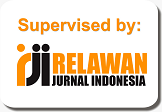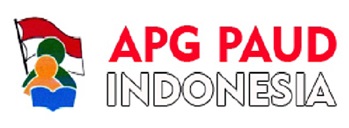FACTORS INFLUENCE THE ACQUISITION OF VOCABULARY BY YOUNG LEARNERS
Abstract
This research focuses on the factors that influence vocabulary acquisition by young learners. This study analyses how internal and external factors influence vocabulary or language acquisition. A person's abilities are influenced by various factors that exist in individuals and the environment, as well as vocabulary abilities. In learning and having adequate vocabulary skills, it is also influenced by several factors that must be considered so that these vocabulary abilities also help students' language and speech development. The data in this study were ten students at Horray School. The data collection technique for this research used observation and questionnaire methods. In this case, observations were made for three weeks, and then a post-test was given to students at the last meeting every week. There is also a questionnaire to be distributed and filled in by parents of students to obtain information on the factors influencing students in mastering English or vocabulary. This study's results indicate several factors that influence students' vocabulary mastery. There are three internal factors: age, experience, and learning style. The three external factors are motivation, instruction, and access to native speakers. These factors come from within the individual or internal and in the environment or external. The environment, in this case, also influences children's vocabulary skills because it is a place for children to adapt and develop their abilities, skills and understanding of various things, including vocabulary mastery.
References
DeKeyser, R. (2013). Age effects in second language learning. In The Routledge handbook of second language acquisition. Routledge.
Fatiha, M., Sliman, B., Mustapha, B., & Yahia, M. (2014). Attitudes and motivations in learning English as a foreign language. International Journal of Arts & Sciences, 7(3), 117-128.
Fazey, I., Bunse, L., Msika, J., Pinke, M., Preedy, K., Evely, A. C., ... & Reed, M. S. (2014). Evaluating knowledge exchange in interdisciplinary and multi-
stakeholder research. Global Environmental Change, 25, 204–220.
Fillmore, L. W., & Snow, C. E. (2018). What Teachers Need to Know About Language. Multilingual Matters.
Harklau, L. (2000). From the “good kids” to the “worst”: Representations of English language learners across educational settings. TESOL Quarterly, 34(1), 35–67.
Kanno, Y., & Cromley, J. G. (2013). English language learners’ access to and attainment in postsecondary education. TESOL Quarterly, 47(1), 89–121.
Loewen, S., & Sato, M. (2017). Instructed second language acquisition (ISLA): An overview. In The Routledge handbook of instructed second language acquisition (pp. 1–12).
Macaro, E. E. (2010). Continuum Companion to Second Language Acquisition. London: London: Continuum.
Noam Chomsky. (1972). Language and Mind. USA: Harcourt Brace Jovanovich. Inc.
Omar, M. K. (2017). The acquisition of Egyptian Arabic as a native language. In The Acquisition of Egyptian Arabic as a Native Language. De Gruyter Mouton.
Paradis, J. (2011). Individual differences in child English second language acquisition: Comparing child-internal and child-external factors. Linguistic Approaches to Bilingualism, 1(3), 213–237.
Pashler, H., McDaniel, M., Rohrer, D., & Bjork, R. (2008). Learning styles: Concepts and evidence. Psychological Science in the Public Interest, 9(3), 105–119.
Preston, D. R., Bayley, R., & Escalante, C. (2022). Variation and Second language acquisition. John Benjamins Publishing Company.
Richards, J. C., Rodgers, T. S. (2014). Approaches and methods in language teaching. Cambridge University Press.: Cambridge University Press.
Rivlina, A. A. (2019). Bilingual language play and world Englishes The handbook of world Englishes.
Snow, C. E., & Hoefnagel-Höhle, M. (1978). The critical period for language acquisition: Evidence from second language learning. Child Development, 1114-1128.
Sugita McEown, M., Sawaki, Y., & Harada, T. (2017). Foreign language learning motivation in the Japanese context: Social and political influences on self. The Modern Language Journal, 101(3), 533–547.
Sun, Y. (2019). An analysis on the factors affecting second language acquisition and its implications for teaching and learning. Journal of Language Teaching and Research, 10(5), 1018–1022.
Turner, J. C. (1995). The influence of classroom contexts on young children’s motivation for literacy. Reading Research Quarterly, 410–441.
Widodo, H. P. (2005). Teaching children using a total physical response (TPR). Method: Rethinking. Bahasa Dan Seni, 33(2), 235-248.

This work is licensed under a Creative Commons Attribution-ShareAlike 4.0 International License.
Authors who publish with this journal agree to the following terms:
- Authors retain copyright and grant the journal right of first publication with the work simultaneously licensed under a Creative Commons Attribution-ShareAlike 4.0 International License that allows others to share the work with an acknowledgement of the works authorship and initial publication in this journal.
- Authors are able to enter into separate, additional contractual arrangements for the non-exclusive distribution of the journals published version of the work (e.g., post it to an institutional repository or publish it in a book), with an acknowledgement of its initial publication in this journal.
- Authors are permitted and encouraged to post their work online (e.g., in institutional repositories or on their website) prior to and during the submission process, as it can lead to productive exchanges, as well as earlier and greater citation of published work (See The Effect of Open Access).











.png)








